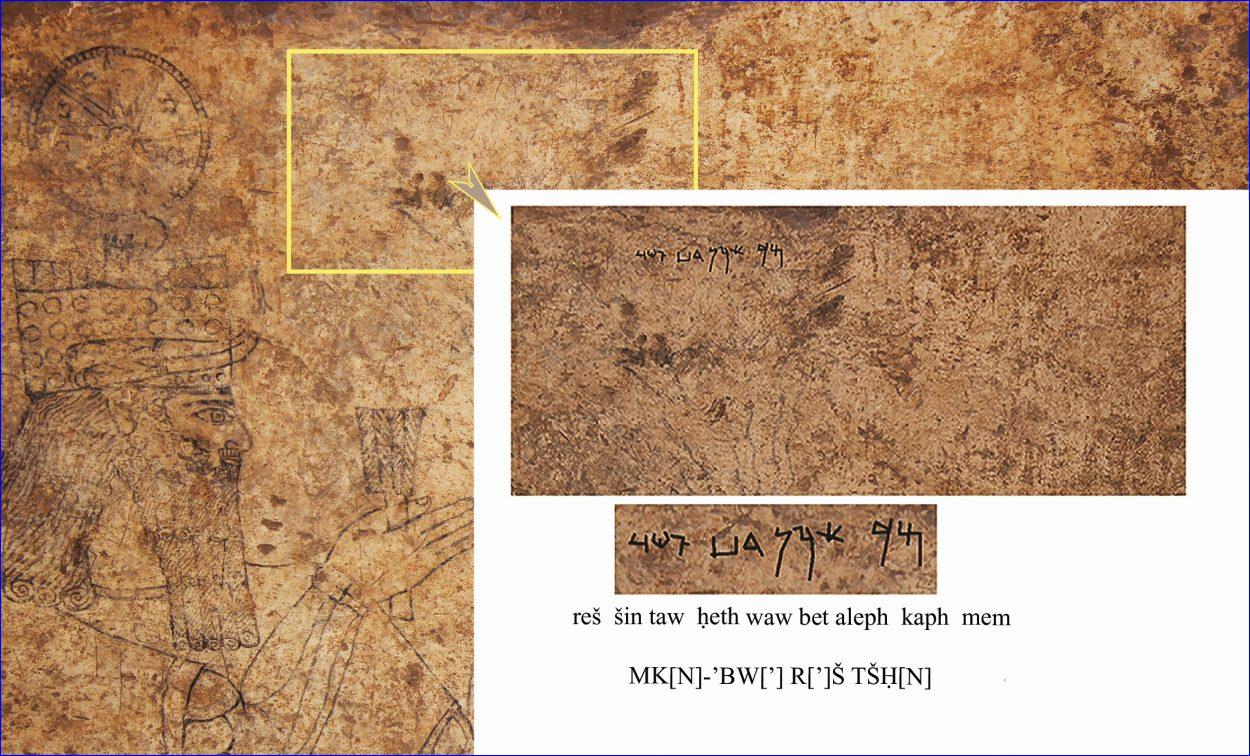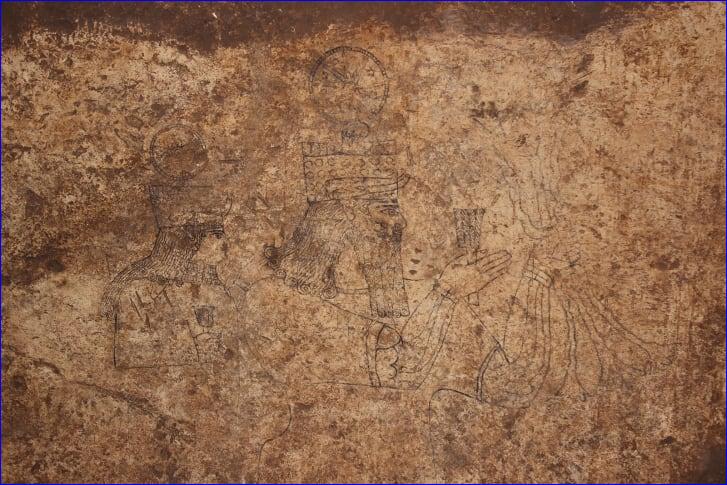


 M. Önal, C. Uludağ, Y. Koyuncu; Antiquity Publications Ltd)
M. Önal, C. Uludağ, Y. Koyuncu; Antiquity Publications Ltd)
The ancient complex, which has yet to be fully investigated due to the instability of the structure, has rare rock art drawings on its walls featuring a procession of deities depicted in an Assyrian style. This art style appears to have been adapted by local groups, indicating how strongly the culture of the Neo-Assyrian Empire -- which hailed from Mesopotamia and later expanded into Anatolia -- spread to the people it conquered in this region, according to the new study, published online May 11 in the journal Antiquity.
"The finding bears witness to the exercise of Assyrian hegemony in the region in its early phases," one of the study's authors Selim Ferruh Adalı, an associate professor of ancient history at the Social Sciences University of Ankara, told Live Science in an email. "The wall panel contains a depiction of divine procession with previously unknown elements, with Aramaic writing to describe some of the deities while combining Neo-Assyrian, Aramaean and Syro-Anatolian divine iconography."
Authorities learned about the ancient underground complex in 2017, after looters discovered it beneath a house in a Turkish village and decided to target its treasures. However, police foiled the looters, and investigating officials soon found an artificial opening the looters had cut through the floor of the two-story house in the village of Başbük, in southern Turkey. This discovery prompted the police to notify the Şanlıurfa Archaeological Museum, whose archaeologists determined that the opening, which measured about 7 by 5 feet (2.2 by 1.5 meters), led to an entrance chamber, carved out of the limestone bedrock, in the underground complex.
The subterranean complex dates to the early Neo-Assyrian period (around the ninth century B.C.), and features an upper and lower gallery, as well as the entrance chamber. The original opening to the entrance chamber has not yet been found.
Museum experts carried out the rescue excavation in August and September of 2018, Adalı said. However, they suspended the rescue excavation after two months because of the instability of the site. The area is now under the legal protection of Turkey's Ministry of Culture and Tourism.

 Antiquity Journal)
Antiquity Journal)
During the short period of excavation, archaeologists removed sediment that had fallen due to erosion in the underground spaces, which revealed a decorative rock relief carved into a wall panel. The panel depicts a procession of gods and goddesses from the Aramean pantheon, some with Aramaic inscriptions next to them.
The excavators sent photos of the inscriptions on the panel to Adalı, who found that the panel had great historical significance.
The expansion of the Neo-Assyrian Empire into what is now Turkey inspired a cultural revolution, as the Assyrian elite used art from their courtly style to express their power over the local Luwian- and Aramaic-speaking peoples.

 M. Önal)
M. Önal)
The wall panel in Başbük shows how Assyrian art was adapted into the Aramaean style in the provincial towns and villages, the researchers found.
Four of the eight deities depicted on the panel could not be identified, according to the study. The Aramaic inscriptions label three of the gods: the storm, rain and thunder god Hadad; his consort Atargatis, a goddess of fertility and protection; the moon god Sîn; and the sun god Šamaš. The drawing of Atargatis is the earliest known depiction of this goddess, the principal goddess of Syria, in this region, the researchers added.
"The inclusion of Syro-Anatolian religious themes illustrate an adaptation of Neo-Assyrian elements in ways that one did not expect from earlier finds, Adalı said in a statement, "They reflect an earlier phase of Assyrian presence in the region when local elements were more emphasized."
The deities on the wall panel suggest that it was "the locus for a regional fertility cult of Syro-Anatolian and Aramaean deities with rituals overseen by early Neo-Assyrian authorities," Adalı told Live Science. One of those authorities might have been Mukīn-abūa, a Neo-Assyrian official who lived during the reign of the Assyrian king Adad-nirari III (811 B.C. to 783 B.C.). The researchers identified an inscription that might refer to Mukīn-abūa. It's possible that Mukīn-abūa took control of the region, and that he used this complex to integrate with and win over locals, the researchers said.
Meanwhile, the presence of Neo-Assyrian art in this complex doesn't necessarily mean that the empire's artists created this panel. Rather, it's likely that "the panel was made by local artists serving Assyrian authorities who adapted Neo-Assyrian art in a provincial context," Adalı said.
He added that the team suspects further excavations will uncover more areas of the underground complex and possibly yield more examples of artwork, as only a small part of the whole site has been explored so far. A full-scale excavation is expected to take place when the entirety of the site has been prepared, according to the procedures of Turkish cultural heritage laws.

or register to post a comment.